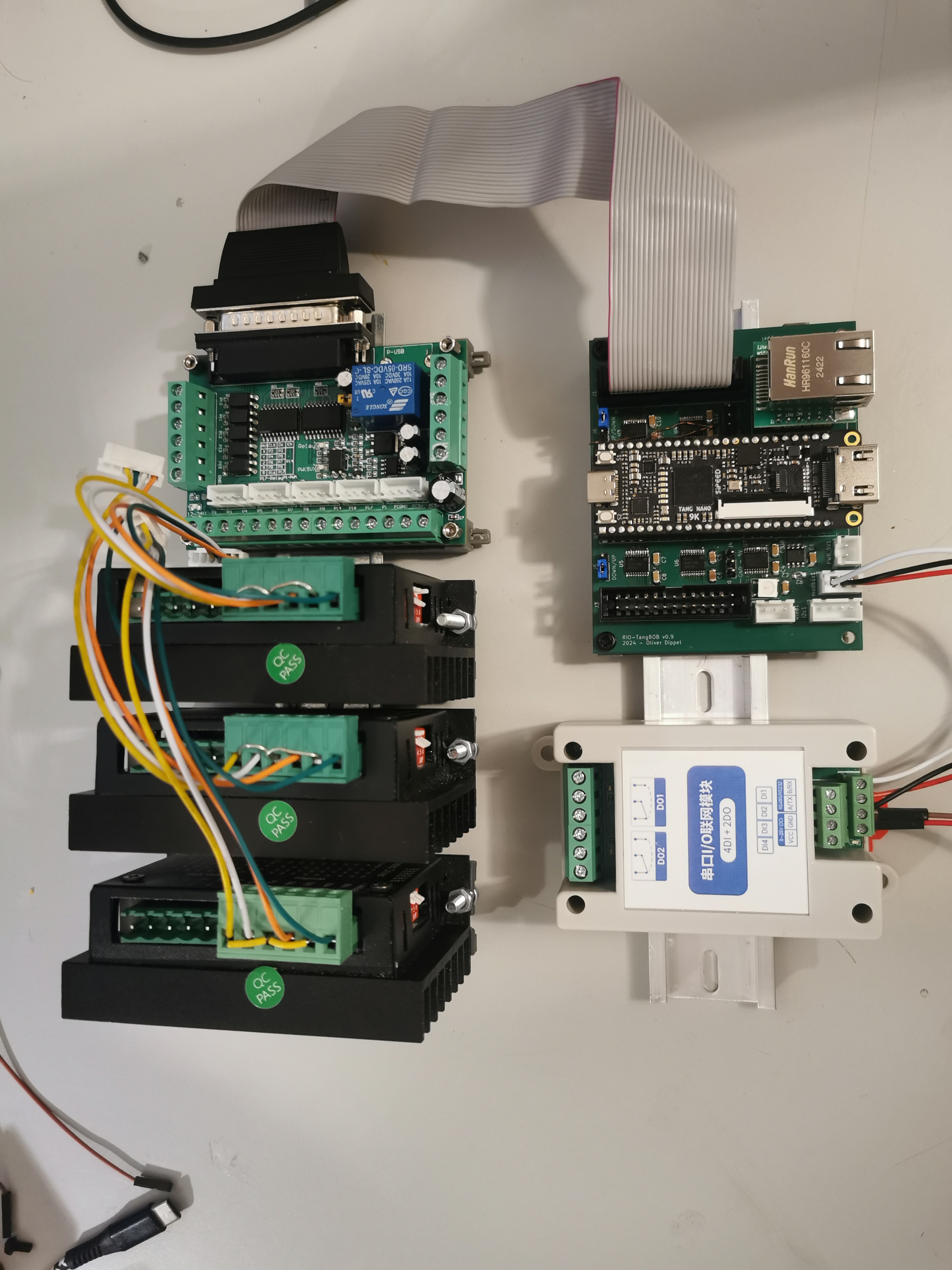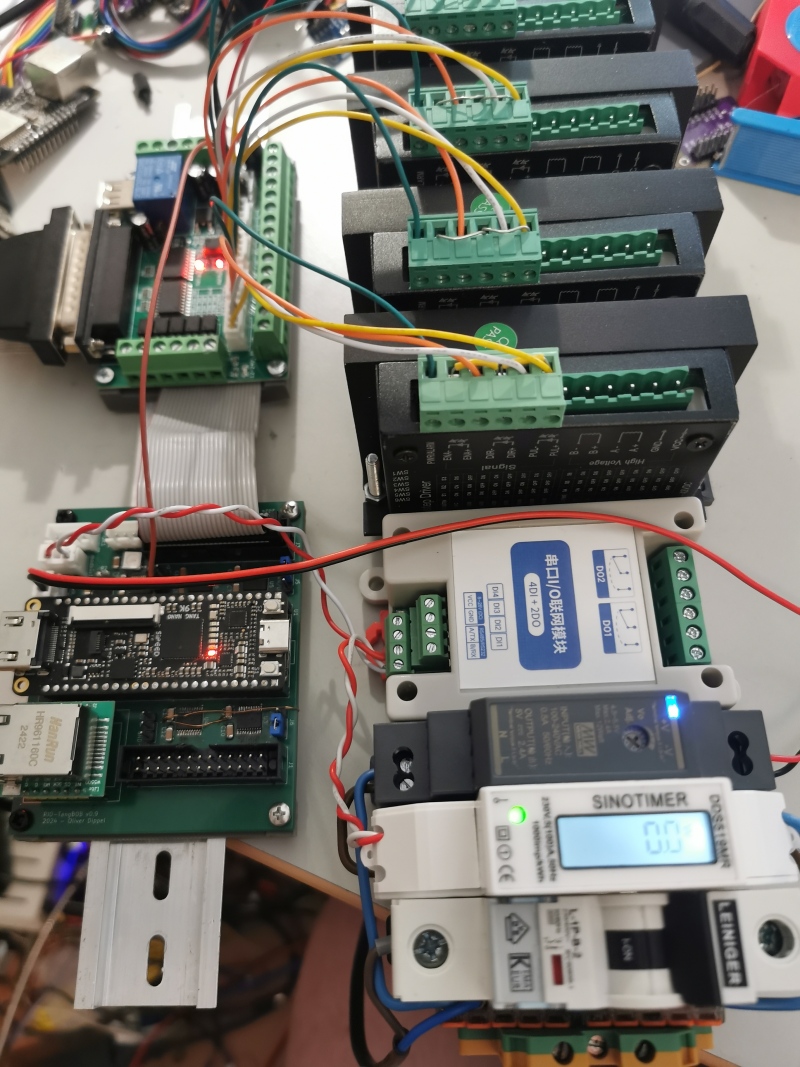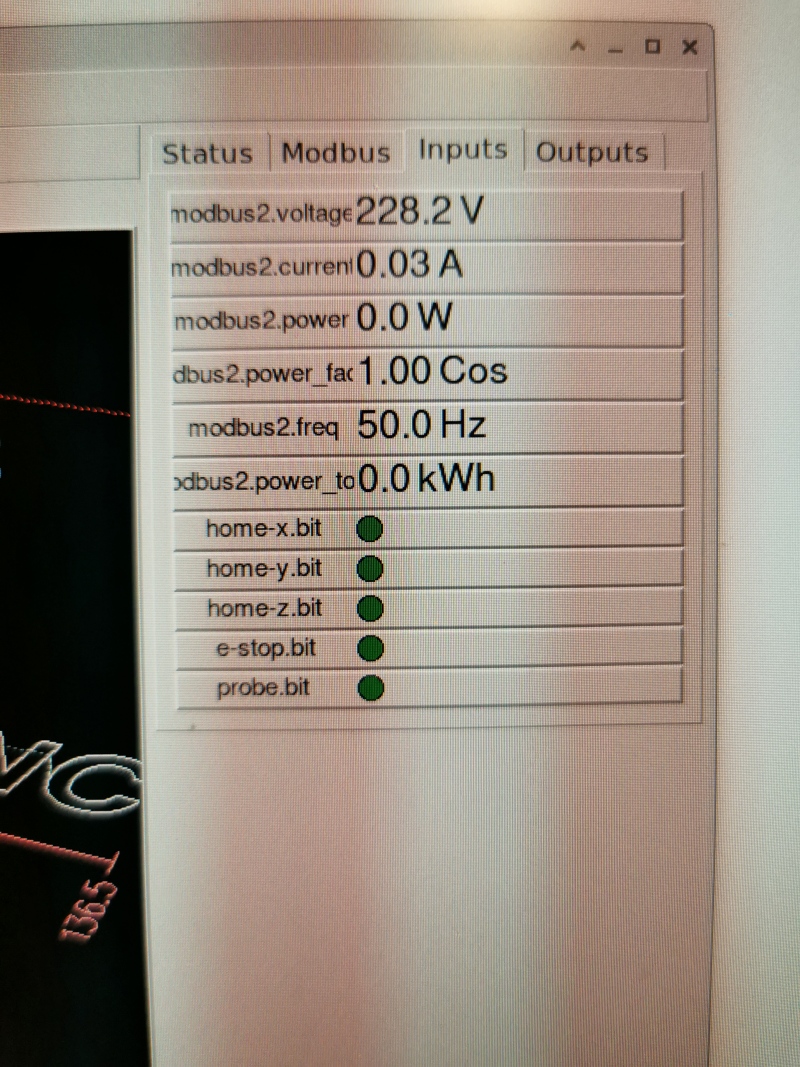- Hardware & Machines
- Computers and Hardware
- LinuxCNC-RIO - RealtimeIO for LinuxCNC based on FPGA (ICE40 / ECP5)
LinuxCNC-RIO - RealtimeIO for LinuxCNC based on FPGA (ICE40 / ECP5)
- Mecanix
- Offline
- Platinum Member
-

- Posts: 447
- Thank you received: 226
I've followed-up your idea of using a Wiz Lite module rather than the diff.pair and matching nets. This freed up a lot of estate and so I squeezed in a GP8101S (pwm-2-analog), a step-up 5~12V MT3608 and an Omron G6K-2F relay. Caters a VFD 0-10V.one error on the board, but with a little fix, all works fine
Word of caution on the Wiz Lite Module though. In a hostile environment it switches from full/half duplex 10 to 100mbps all on its own. This is because the 3 PMODE pins are left floating. If you can, jump-wire those UP on a 4k7 and that'll sort it.
Amazing solution you've put up, Olivier. Hope the guys will get that Tang Nano 9k and experiment how excellent RIO is.
Please Log in or Create an account to join the conversation.
- Mecanix
- Offline
- Platinum Member
-

- Posts: 447
- Thank you received: 226
Please Log in or Create an account to join the conversation.
- fest
- Offline
- New Member
-

- Posts: 14
- Thank you received: 10
Still have to actually build & test it- I'm fairly sure that there will be f-ups, just hope that nothing too major
Please Log in or Create an account to join the conversation.
- Cant do this anymore bye all
-

- Offline
- Platinum Member
-

- Posts: 1200
- Thank you received: 425
Generally when I've been designing my boards I've followed the mesa example where all the signals from the FPGA that will be controller something go through a FET bus switch with a pullup resistor to 5v on the "world side"(I'm a cruddy old guy lol, I like 5v). Gives you bi directional voltage translation, and works fine even with the 2.5MHz SmartSerial signals (when I use mesa firmware tho my design also can run rio with no issues). To drive outputs I add a buffer or just connect directly to a simple Parallel Port breakout board.
Have you thought about screw terminals for the outputs ?
With regards to the differential outputs for the stepper drivers, it would take some serious noise to have any affect when driving an opto. I've used plain old 74 series 540/541 powered by 5 volts with no issues for years, plenty of drive there. And generally the cable length isn't all that great from between the step\dir source & destination.
Tommy linked a video to a guy that experiments with noise & shielded cables, very interesting.
For 5v to 3.3v translation 74lvc is a good candidate.
Please Log in or Create an account to join the conversation.
- meister
- Offline
- Platinum Member
-

- Posts: 662
- Thank you received: 411
Attachments:
Please Log in or Create an account to join the conversation.
- meister
- Offline
- Platinum Member
-

- Posts: 662
- Thank you received: 411
Hi festl,I finally finished designing my modular design idea: github.com/festlv/rioctrl-hw
Still have to actually build & test it- I'm fairly sure that there will be f-ups, just hope that nothing too major
had somehow overlooked your post, something is wrong with my email notification
very nice !!!
will take a closer look and am looking forward to the first tests
Please Log in or Create an account to join the conversation.
- meister
- Offline
- Platinum Member
-

- Posts: 662
- Thank you received: 411
Please Log in or Create an account to join the conversation.
- cakeslob
- Offline
- Platinum Member
-

- Posts: 922
- Thank you received: 275
Word of caution on the Wiz Lite Module though. In a hostile environment it switches from full/half duplex 10 to 100mbps all on its own. This is because the 3 PMODE pins are left floating. If you can, jump-wire those UP on a 4k7 and that'll sort it.
give me more details please ,experience or in theory? would everything stop working or would it cause persistent issues? Ive been running these for about 8 months now and havent seen anything too bad, so i am curious
Please Log in or Create an account to join the conversation.
- Mecanix
- Offline
- Platinum Member
-

- Posts: 447
- Thank you received: 226
Nothing bad at all, it's a great module overhaul. The downside of floating state pins is randomness, therefore not a persistent issue.
give me more details please ,experience or in theory? would everything stop working or would it cause persistent issues? Ive been running these for about 8 months now and havent seen anything too bad, so i am curious
Fwiw the PMODE select pins have internal/weak resistors. Meaning; if the environment the system is operating in is an ideal one then most likely the internal weak resistors will be sufficient. However, (in my case), if there is quite a bit of noise/emi/gamma rays/bitflips/coffee/radiation/traffic/manyothers... you may experience strange 10mbps half-duplex startups and/or strange network negotiation. The workaround/fix to that is to harden the PMODE pins' state with pullups (4K7) - see source schematic (pardon my crayon!).
Please Log in or Create an account to join the conversation.
- epineh
- Offline
- Senior Member
-

- Posts: 72
- Thank you received: 25
I'm going to copy ColdTurkey's example on the Remora thread using the live install version of LinuxCNC Debian, so anybody following will have the same starting point.
I am guessing anybody familiar with setting this up will overcome simple hurdles without thinking, but those of us that aren't really computer guys will struggle.
My only question I'll ask here though is should I do this for LinuxCNC-RIO or Riocore ?
Cheers.
Russell.
Please Log in or Create an account to join the conversation.
- Hardware & Machines
- Computers and Hardware
- LinuxCNC-RIO - RealtimeIO for LinuxCNC based on FPGA (ICE40 / ECP5)




